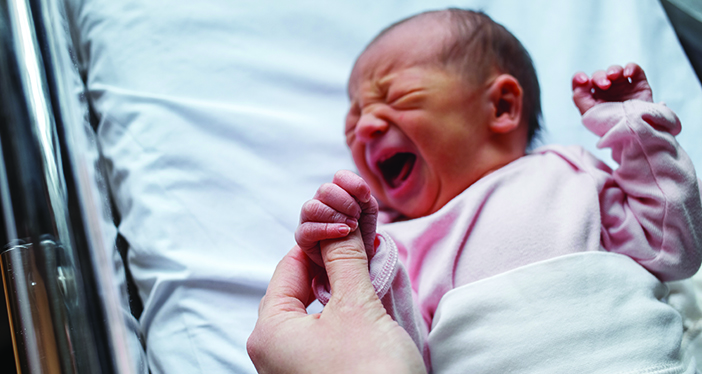Thanks to early support from a few entrepreneurial Brown alumni, Brown Biomedical Innovations to Impact (BBII) was formed to help bridge the funding gap for projects that fall somewhere between conceptualization and realization. Patients may soon reap the rewards from such generosity as certain ideas move closer to fruition.
Researchers Barry Lester, PhD, Stephen Sheinkopf, PhD, and Harry Silverman recently received their second BBII award to continue developing computer software that would help nurses and physicians determine if the acoustical characteristics of an infant’s cry meet criteria for neonatal abstinence syndrome (NAS).
According to Lester and his colleagues, the software could improve diagnosis accuracy, making it less subjective. This would, in turn, provide better treatment for infants suffering from opioid withdrawal, reduce hospital stays, and lower costs. It would also avoid treatments for infants who don’t need it.
“It’s often hard for scientists to think about how their work might translate into a medical device that has practical importance,” says Lester. “There aren’t many opportunities to turn an idea into an actual product that impacts public health, or even be encouraged to do so. The BBII funding came at a critical point, and we knew we had to take advantage of this support from Brown so we could improve the outcomes of infants born with NAS.”
In the last two years, the research team has recorded cries from 90 babies with prenatal opioid exposure, some who went on to develop NAS and others who did not. They have also recorded cries of 50 infants with no prenatal drug exposure. They are working to refine the cloud-based algorithm enough so they can build a prototype to test at Women & Infants Hospital and reconfirm their accuracy levels. With the advances in technology, their product will be a hospital-only user interface compatible with devices such as mobile phones that will transfer information directly into a patient’s electronic medical record.“
The BBII award gave Drs. Lester and Sheinkopf the freedom to think about how their product might be developed into something useful that hospitals will purchase,” says Karen Bulock, managing director of BBII. “Feedback from the hospital’s health care team will be critical for knowing how well it works in real-life situations. At the end of the project, we hope this market research and the team’s accuracy data will position their product for the next level of funding needed for commercialization.”



